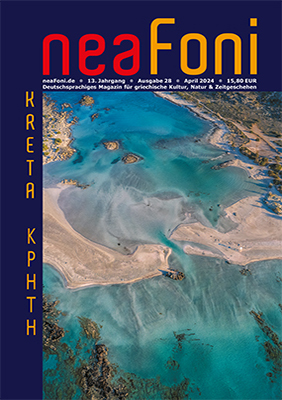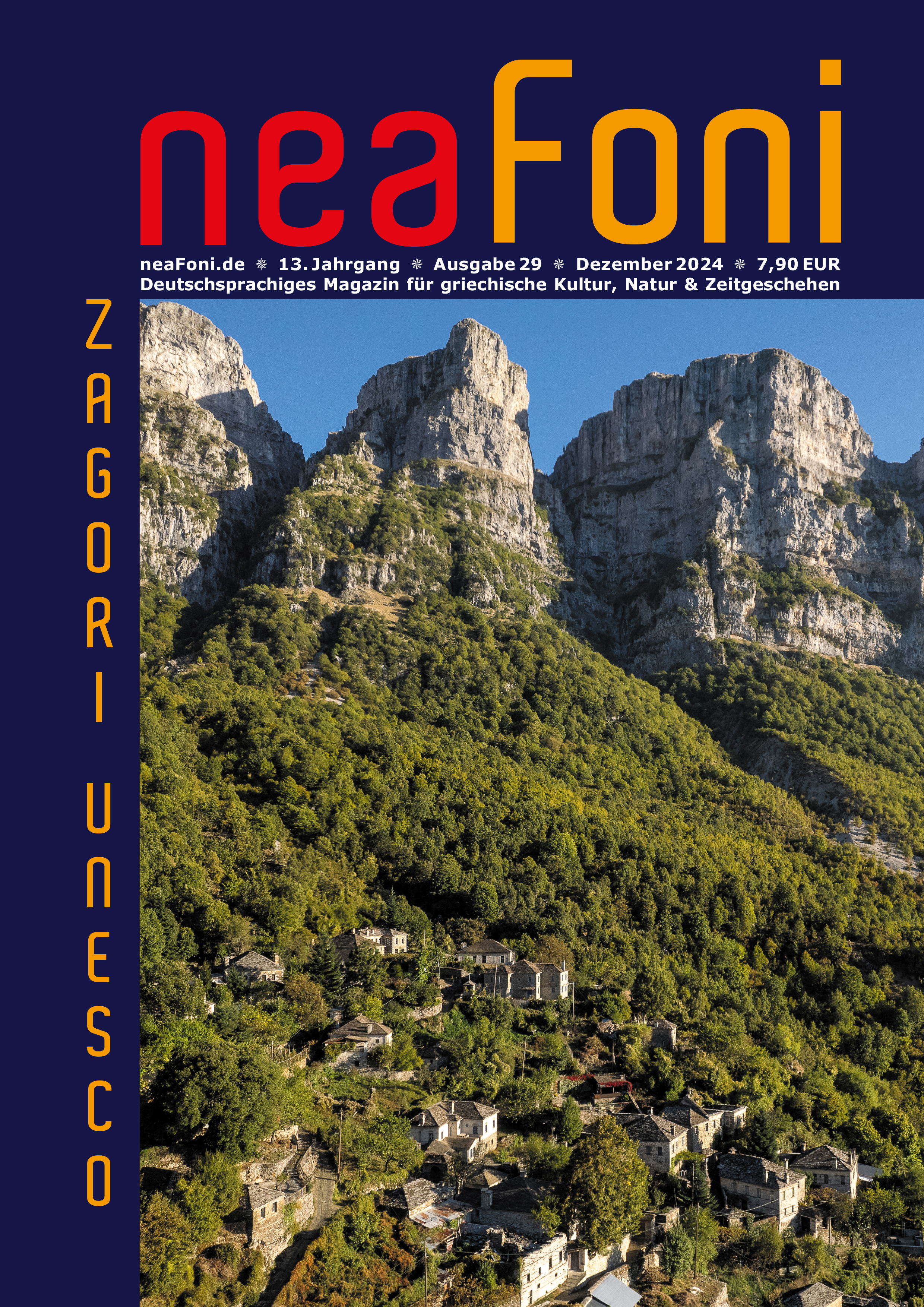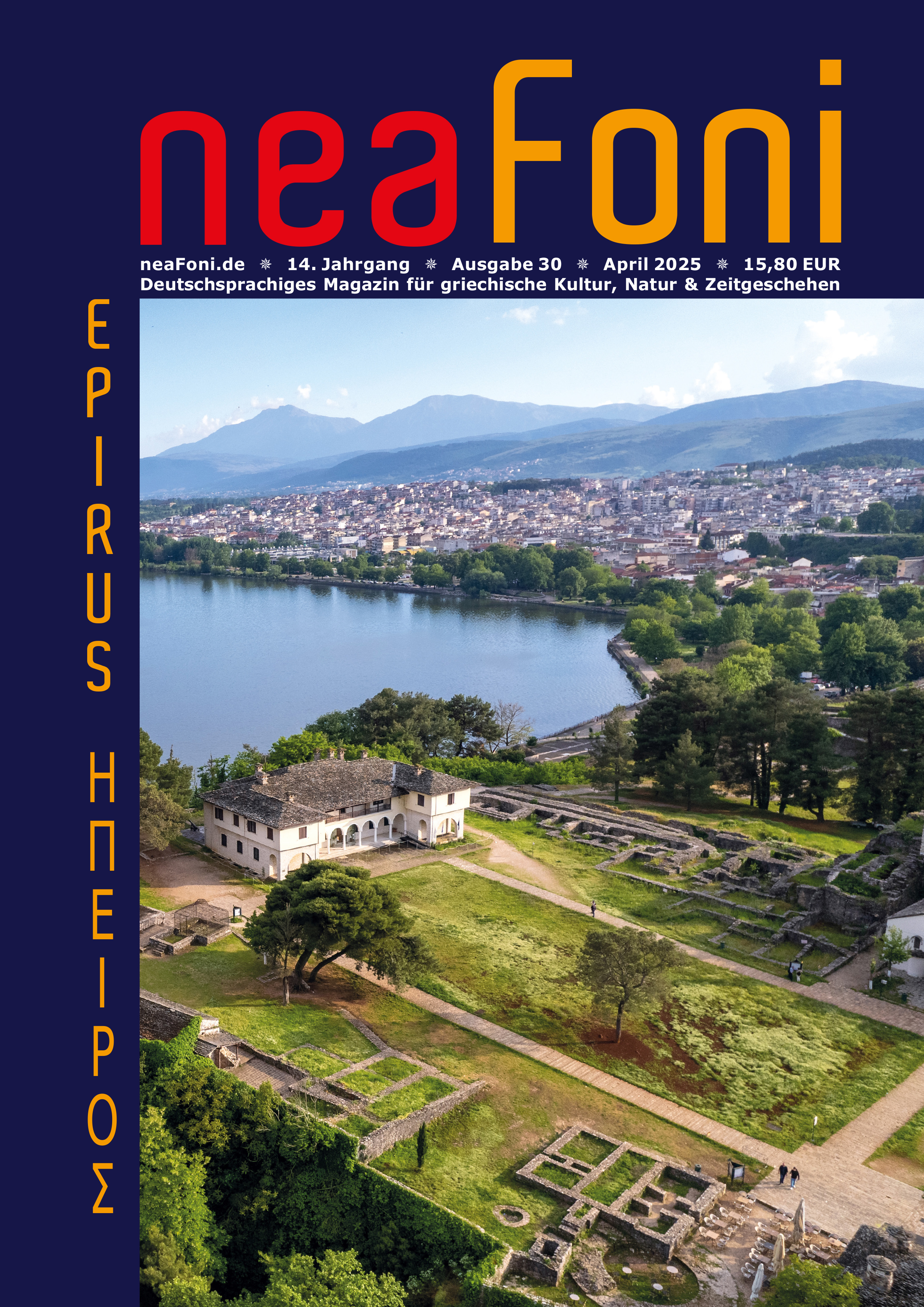Das Hauptereignis in der orthodoxen Kirche ist die Auferstehung. Die Heilige Eucharistie vergegenwärtigt für den orthodoxen Gläubigen die Vorfreude auf das Himmelreich. Das Hauptwerk der Kirche ist das Gebet und die Eucharistie, das unablässige Danken und Darbringen der Gaben Brot und Wein. All das dreht sich in der Kirche um den Tisch der Heiligen Eucharistie, der Mensa ab. Beim Betreten einer Kirche fallen dem Besucher viele bunte Farben und Gegenstände ins Auge.Von den großen Ikonen an der Altarwand, dem erhobenem Ambo und den großen und kleinen Kronleuchtern und Wandlichtern bis hin zu den Fresken und den dicht zueinander gesetzten Sitzbänken. All das ist so prächtig geschmückt, dass man den Eindruck hat, dass es einen überschlägt. Und trotzdem fühlt man dabei ein beruhigendes Gefühl. Wenn man einen Gottesdienst besucht sind meistens viele Kerzen angezündet, der Weihrauch steigt in Fülle in den Himmel empor, das Hin und Her von Menschen, Messdienern, Küstern und Vorstehern, das Austeilen von Devotionalien, wie z.B. ein Stück Brot am Ende des Gottesdienstes (Antidoron), Weihwasser oder Palmenzweigen bezeugen zum einen die Lebendigkeit, die in den Gottesdiensten herrscht und zum anderen die Teilnahme des Materiellen im Gottesdienst.
Die folgende Einführung der orthodoxen Kirche wiederspiegelt fast ausschließlich alle orthodoxen Kirchenbauten und ist für jede Kirche representativ. Ob Sie nun eine orthodoxe Kirche in Kiev oder in Tokyo besuchen, oder ob Sie eine Kapelle eines orthodoxen Klosters auf dem Athos betreten oder in einer Einsiedelei in der Sinaitischen Wüste sind, werden Sie kaum Unterschiede entdecken. Zu jeder Beschreibung folgt ein kurzer historischer Einblick mit anschließendem theologischem Nachdruck.
Das orthodoxe Kirchenschiff lässt sich in drei Bereiche aufteilen. Vom Kircheneingang bis zum Altar befindet sich das Atrium (Vorhalle), dann folgt das Kirchenschiff (Narthex) und darauf das Allerheiligste, der Altarraum. In der Vorhalle sind Ikonen und sandgefüllte Kerzenständer zu sehen. Die Gläubigen können dort ein Kerze anzünden und sich dann anschließend vor der Ikone bekreuzen. Der Altarraum wird vom übrigen Kirchenschiff durch die Altarwand getrennt. Im Kirchenschiff befinden sich ausserdem die Chorstühle, Bänke, der Ambo, der Bischofsthron und die Chöre. Der Altarraum wird wiederum in drei Bereiche geteilt. Der Altarraum, dem Diakonikon (vergl. der Sakristei) und der Prothesis (dem Rüsttisch, auf dem die heiligen Gaben für die Kommunion vorbereitet werden). Die ersten christlichen Kirchen sind keine Erfindung des antiken Tempels oder Theaters, wie viele behaupten. Hätten denn die ersten Christen daran gedacht eine heidnische Baukunst weiter am Leben zu erhalten ? Viel mehr ist dieser Kirchenbau im Wandel der Zeit aus den Gegebenheiten entstanden, das man eher von einer Ähnlichkeit sprechen kannn. Der Priester der alten Griechen betraten den Tempel und brachten ihre Opfer dar und den Laien war der Zugang ins Heiligtum untersagt. Das ist für die ersten Christen nicht der Fall, sie benötigten einen Versammlungsraum und alles kirchliche Leben drehte sich um diese Versammlung, der heiligen Eucharistie. Das Christentum breitet sich im dritten Jahrhundert mehr und mehr aus und seine Mitglieder suchen nach größeren Räumen, bzw. müssen neue Gebetshäuser errichten. Ideale Versammlungsräume sind in diesem Jahrhundert die forensisichen Basilikas, die als Markt- oder Gerichtshallen dienten. In diesen Hallen trafen alle ein um die Eucahristie zu feiern. Die Gläubigen hatten einen bestimmten Platz. Vorn nahmen die Älteren und Hilfsbedürftigen Platz, dann folgten die Kinder und deren Mütter, anschließend die Witwen. Zuletzt folgten die Männer. Eine geschlechtliche Trennung, wie man sie heute in vielen Kirchen sieht, war damals ausgeschlossen, was sich auf das Ausharren und die Hoffnung der baldigen Wiederkehr Christi beruht. Eine geschlechtliche Unterscheidung ist ein Ergebnis der starken Pietismus und Reinigkeitsgefühls aus den letzten Jahrhunderten.
Der Altarraum und die Altarwand ist einer langen geschlichtlichen Umwandlung unterzogen. Die Urgemeinde kannte keine Ikonenwand. Diese entstand erst viel später. Die Malkunst in der Ostkirche beginnt erst so ab den Anfängen des 2. Jahrhunderts zu blühen. Natürlich gab es auch schon davor einige Anzeichen von Kirchenkunst in der Malerei, aber eher sporadisch. Die Ikonewand, die den Altarraum von dem Kirchenschiff trennt gab es damals noch nicht, jedoch stellte man Ikonen vor dem Altar auf einem dafür bestimmten Gerüst. Die Höhe dieses Gerüsts war nicht höher als die eines Menschen. Im Laufe richtete man zwischen die Ikonen Kolonnen auf, die das ganze verstärkten und ausschmückten. Durch die Jahrhunderte formte sich aber die Ikonenwand zu dem, was sie heute ist. Insbesondere während des Ikonenstreits ab dem 8. Jahrhundert erfuhr die Ikonenwand eine starke Entwicklung. Die Intepretationen sind unterschiedlich ausgelegt. So ist für viele die Goldene Tür in der Ikonenwand die Pforte zum Himmelreich, die Trennung des Kirchenschiffs symbolisiert die zwei Wesen Jesu Christi oder auch die Welt und den Himmel. Heute gibt es mannigfaltige Variationen der Ikonenwand, z.B. Ikonenwände aus der Renaissance, dem byzantinischen Kaissereich oder der russischen Baukunst.
Die Ikonen auf dieser Wand sind vorwiegend aus der byzantinischen Ikonenmalschule und unterteilen sich in verschiedene Stile. Dennoch unterscheidet sich die byzantinische Kunst in einem und tiefgründigem Punkt von anderen Malereien. Die Zweidimensionalität und die unnatürliche Abbildung der Personen (lange Nasen, große strenge Augen) und Gegenstände wollen zum einen die überdimensionale Wirklichkeit der himmlischen Welt darstellen und zum anderen ihre liturgischen Funktion innerhalb des Gottesdienstes zeigen, Ikonen dienen nämlich den Gläubigen in den Himmel zu versetzen.
Rechts und links zwischen dem Altareingang befinden sich jeweils drei Ikonen. Die rechten zeigen immer in folgender Reihenfolge Jesus Christus, Johannes den Täufer und den Erzengel Gabriel. Auf der linken Seite in umgekehrter Reihenfolge die Gottesmutter, die Heiligen oder das Ereignis, dem die Kirche geweiht ist und der Erzengel Michael. Neben diesen Ikonen befinden sich zwei Türen, die Nord- und Südtür, die in den Altar führen. Zu den Ikonen gibt man folgende Erklärung. Betrachtet man nur die Ikonen der Gottesmutter, die in der orthodoxen Malkunst ausschließlich mit ihrem Sohn als Kind abgebildet wird und nie allein, wird man feststellen, dass sie das Dogma der Menschwerdung darstellt. Auf der anderen Seite ist Jesus Pantokrator (Allstarker) als Richter abgebildet. Wenn man beide Hände betrachtet, wird man feststellen, dass er in seiner linken Hand die Bibel trägt, also sein Wort, seine Regeln und somit auch als Richter die Welt richten wird, aber gleichzeitig mit seiner rechten Hand das Volk segnet. Hieraus möchte der Ikonograph und die Kirche selbst die Tatsache in Erwägung bringen, dass es sich hier nicht nur um einen lieben Gott handelt, wie vielleicht viele ihn haben wollen, sondern um einen gerechten Gott, dessen Gericht man sich bewusst werden muss. Man soll aber nicht verzagen, wenn um das Heil geht, denn er ist auch ein sorgender Vater und schenkt allen seinen Segen wie ein wohltuendes Balsam. Diese Ikonen sollen uns an das erfreuliche Ereignis der Mesnchewerung erinnern, aber uns gleichzeitig auch an das Jüngste Gericht vor Augen halten.
Neben Jesus Christus ist Johannes der Täufer abgebildet, der als Vorläufer Jesu auf die Welt kam und seine Stelle dort verdient. Die Ikone neben der Gottesmutter ist der Heiligen oder dem Heiligen gewidmet, der der Kirche gewidmet ist. Diese sind auch die Schutzparonen der Kirche Es kann sich aber auch um ein biblisches oder auch kirchenhistorisches Ereignis handeln.. Die Ikonostaste darf nicht als eine Trennung des Allerheigsten mit dem weltlichen oder gar sündhaften gesehen werden. Auch wenn unsere Zeit heute sehr stark vom Pietismus geprägt ist, täte es der Kiche Unrecht, wenn man die Ikonostaste nicht in ihrem anfänglichen Zweck betrachtet: sich an die Personen erinnern und besinnen.
Die Ikonostaste ist in vielen Fällen holzgeschnitzt oder aus Marmorblöcken gebaut. Auf vielen findet man Abbildungen aus der frühchristlichen Zeit. So ist zum Beispiel der Pfau das Symbol der Herrlichkeit und Majestät. Weinreben deuten auf die Frucht des Weines aus dem die Eucharistie gegossen wird. Ein weiterer Schmuck, die nicht in allen Kirchen zu sehen sind, sind Strausseneier oder Schiffe. Letztere findet man in Kirchen auf den Kykladischen Inseln wieder. Sie symbolisieren die Welt und die Kirche Gottes. (Ein kleiner Tipp aus dem Weisheitskeller der Mönche. Strausseneier unter den hängenden Kronleuchtern sollen angeblich Spinnweben entfernen). Ein sehr bekanntes Symbol ist auch der doppelköpfige Adler, das Wappen der Komninendynastie. Mit diesem Zeichen hat sich die Kirche selbst später als byzantinisch agestempelt und sich somit identifiziert. Warum das passiert ist kann geschichtlich nachverfolgt werden. Es hat aber nichts mit dem Wesen der Kirche zu tun. Die Kirche ist an sich etwas ökumenisches und darf sich auf keine Nationalität beziehen. Hierbei sollte auch erwähnt werden, dass der Begriff griechisch – orthodox fälschlicherweise mit der griechischen Nationalität verwechselt wird, aber es bezieht sich auf die Kulturtradition des hellenischen Raumes.. Und diese beschränkte sich zumindest damals nicht nur auf Griechenlands heutigem Territorium, sondern umfasste den östlichen Mittelmeerraum. Man muss sich aber auch dessen bewusst werden, welchen Einfluss der Staat auf die Kirche und umgekehrt auch hatte, so dass viele von einer nationalen Kirche sprechen. Nach der Einnahme Konstantinopels von den Osmanen ist das griechische Volk bis auf heute patriotisch geprägt und viele glauben auch heute noch, dass die eroberten Gebiete wieder in griechischer Hand sein werden. Das griechische Volk ist gerade seiner heiklen Geschichte an seine Kirche gebunden.
Auf dem Altar befinden sich das Evangelium, ein Segenskreuz, ein Tabernakel, in dem Heilige Kommunion für Notfälle oder Sterbefälle aufbewahrt wird. Auch den Kranken oder Sterbenden muss man die letzte Stütze mitgeben. Das Evangelium ist das Wort Gottes und stets immer auf dem Altar. Hinter dem Altar befinden sich in Gold überzogen ein Kreuz und zwei Sechsflügler Cheroubim. Sie symbolisieren und bezeugen, dass während der Liturgie Engelsschaaren um den Altar fliegen.
In der Urgemeinde war es üblich dass hinter dem Altar der Thron des Bischofs war. Im griechischen bedeutet Bischof (ep?s??p??) , der alles überschaut. Die Gemeinde findet ihre Gemeinschaft zwar in Jesus Christus, doch der Bischof ist der Typus des Herrn. Ohne ihn konnte damals kein Gottesdienst stattfinden, aber auch umgekehrt wäre es zwecklos ohne Volk zu zelebrieren. Die Eucharistie ist ein Gemeinschaftsakt. Heute hat sich das geändert. Die Bischöfe haben große Bistümer. Sie können nichts stets in einer Gemeinde zelebrieren. Dafür sind die Verpflichtungen zu vielseitig. Deshalb zelebrieren oftmals nur die Priester ohne den Bischof. Der Thron wurde während sich die Ikonenwand erhöhte aus dem Altarraum abgeschaffen und an seiner Stelle kam das Kreuz. Der Thron ist nun auf der rechten Seite neben dem Chor und bezeugt die Anwesenheit des Bischofs.
Im Heiligtum steht der Altar. Er war und ist heute der Tisch auf dem die Eucharistie gefeiert wird. Die Urgemeinde kannte eigentlich weniger einen separaten Tisch auf dem man die heiligen Gaben darbrachte. Es wird berichtet, dass der Gottesdienst in den Anfängen des Christentums in den Häusern gefeiert wurde. Also muss man davon ausgehen, dass die Brotbrechung auf den üblichen Haushaltstischen zusammen mit den Agapetischen gefeiert wurde. Im ersten Jahrhundert gibt es keine Liturgietypen in dem Umfang, wie wir sie heute kennen. Die erste und vielleicht kürzeste Liturgieform ist die Didache der Zwölf Apostel gefolgt vom Heiligen Hippolytus. In den Jahren der großen Christenverfolgung werden Liturgien auf dem Gräbern der Märtyrer zelebriert. Diese Tradition wird starke Wurzeln schlagen, denn als sich das Christentum verstärkt und die ersten Kirchen gebaut werden, presst man symbolisch Heiligenreliquien in die Altäre ein. Das ist theologisch erklärbar. In der orthodoxen Kirchenlehre spricht man von einer triumphierenden und einer kämpfenden Kirche auf Erden. Dies bezeugt die Gemeinschaft der Heiligenwelt mit der irdischen Kirche. Die Urgemeinde stützt ihren Glauben auf das Martyrium ihrer Heiligen.
Links vom Altarraum befindet sich eine kleine Apsis in der die Eucharistie vorbereitet wird. Auf der rechten Seite befindet sich die Sakristei. Es handelt sich hier um einen kleinen Teil des ganzen Altarraumes in der die Gewänder der Priester und Messdiener aufgehangen werden. Die Gewänder des Klerus sind in ihrer heutigen Form aus der spätantiken Festtagskleidung und aus der Tracht des Konstantinoplers Kaiserhofes hervorgekommen. Die Kleidung des Priesters besteht aus einem kleinem Untergewand mit einem Kreuz auf dem Rücken (Sticharion), einer Stola (Epitrachil), einem Gürtel, einem ämellosen Mantel (Phelonion) und manschetteartigen Armbinden (Epimanika). Die schwarze Kutte des Klerus stammte aus der Türkenherrschaft und war ursprünglich ein Gewand des Mönchs. In der damaligen Zeit hatte der Priester in einer Gemeinde weniger damit zu tun. Erst während der Befreiungszeit des Griechischen Volkes im Jahre 1912 hatte der Staat dem Klerus vorgeschrieben schwarze Kleidung zu tragen, damit man sie unterscheiden kann.
Alle Kirchen schauen nach Osten, also Richtung Sonne, die Jesus Christus als das heitere Licht symbolisiert. Kleine Kapellen oder Kirchen stehen am Rande einer Straße und werden als die Wegmarken des Glaubens charakterisiert. Sie sind ein Ort der Besinnung, des Gebets, eines Wunders oder aber auch eines Unfalls. Im orthodoxen Verständnis ist der Tod der Durchgang zum wahren Leben.
Von Archidiakon Privatdozent Dr. Dr. Wasilios Klein





